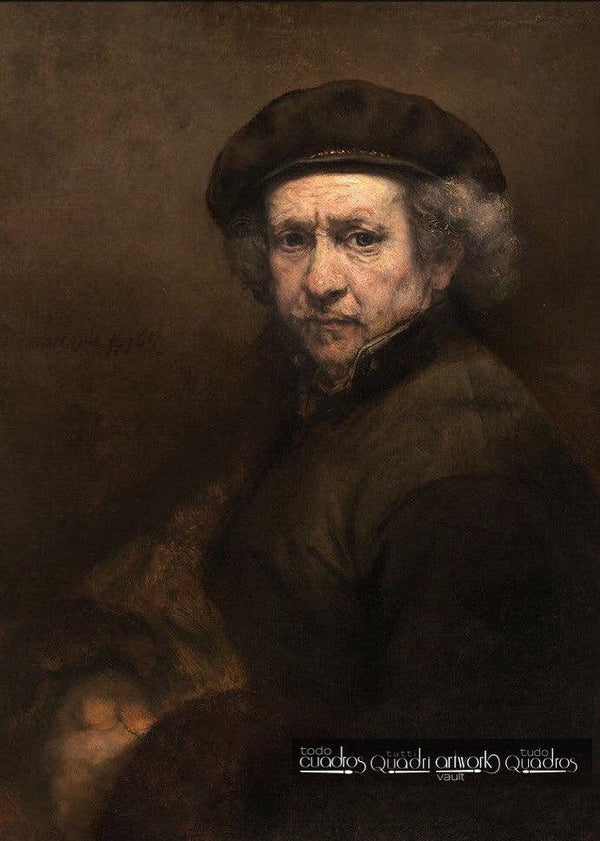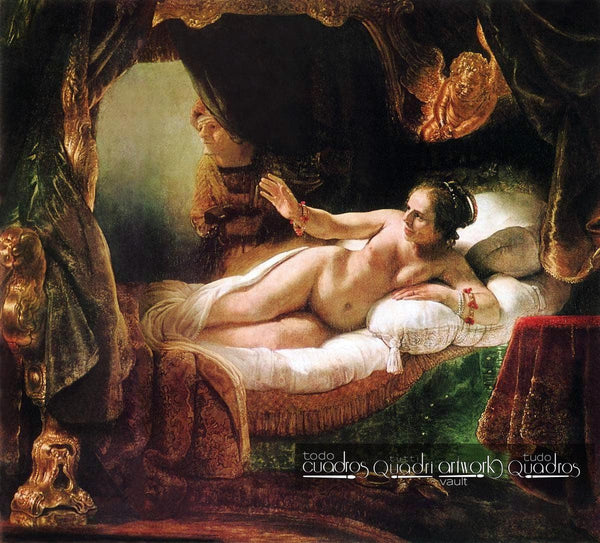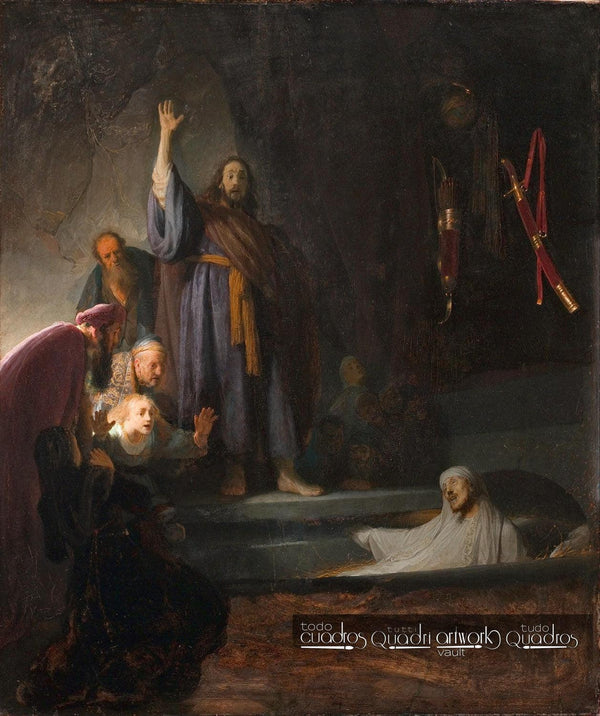Rembrandt
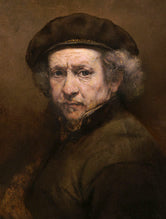
| Full Name: | Rembrandt Harmenszoon van Rijn. |
|---|---|
| Nationality: | Dutch. |
| Year of Birth: | 1606, Netherlands. |
| Year of Death: | 1669, Netherlands. |
| Style: | Baroque, Flemish School. |
Rembrandt was a Dutch painter and engraver, a leading figure of the Baroque style and the Flemish school, considered the most talented and prolific pictorial artist in the history of the Netherlands.
Rembrandt's paintings offer not only an aesthetic proposition, but are also full of meaning and simplicity. A specialist in traditional and biblical scenes, he shunned the aesthetic and even provocative ostentation that other Baroque artists preferred.
Rembrandt never confined his works to one style, nor did he conform to an artistic trend. Far from this, he was the one who led trends, innovated, and constantly changed his way of painting.
Around his paintings, all kinds of historical, theological, and scientific studies have been conducted: themes, composition of pigments, brushstroke style, colors, etc.
Paintings by Rembrandt
Rembrandt's pictorial work is exhibited in the world's most renowned museums, including: The Prado, Louvre, Hermitage, and MET New York, among others. Here we present his 12 most important paintings.
-
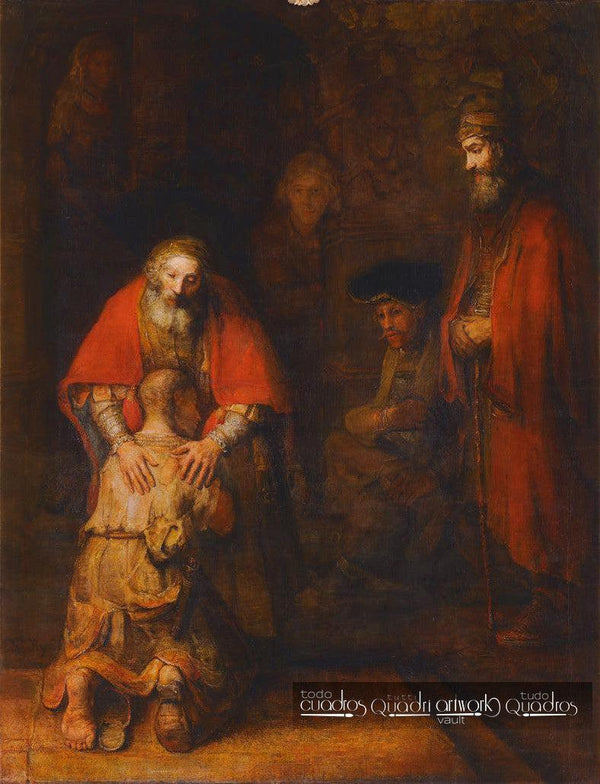
La obra "El Retorno del hijo pródigo" fue pintada entre los años 1963 y 1965 por el neerlandés Rembrandt, pintor y grabador, máximo exponente del estilo barroco.
Los elementos del cuadro no han sido dejados al azar, se han realizado estudios de cada detalle, expresiones de los rostros, posturas corporales, colores e iluminación, cada aspecto está minuciosamente pensado por el pintor, atendiendo a su propia Fe.
La escena representa la parábola del hijo pródigo, narrada en el capítulo 15 del Evangelio de San Lucas, concretamente, cuando el joven arrepentido y avergonzado regresa a la casa del padre, después de haberse gastado toda su hacienda.
Al verlo a lo lejos, el padre corre a buscarlo con alegría, y el hijo se postra ante él. Para explicar el acontecimiento el padre grita a todos: "Este hijo mío estaba muerto y ha vuelto a la vida, estaba perdido y ha sido encontrado". Mientras, el hermano mayor junto con sus amigos, lo miran con desprecio.
Actualmente la obra se encuentra expuesta en la pinacoteca del Museo del Hermitage, San Petersburgo, Rusia.
-
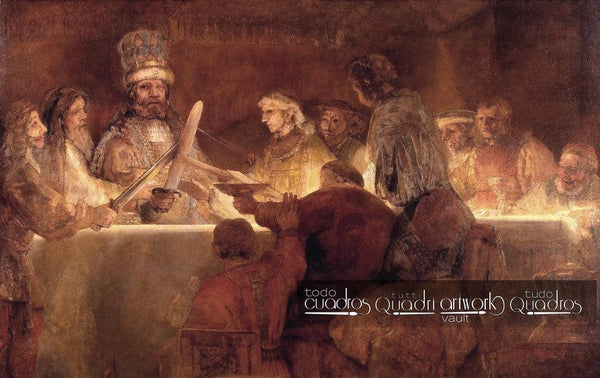
Obra de Rembrandt considerada como la más completa en su narrativa y simbología, presenta un trozo de la historia del siglo 1 a. C. Sobre un pequeño pueblo que conspiraba contra el gran imperio romano y su césar. Pintada en 1662, actualmente en el Nationalmuseum, Estocolmo.
-
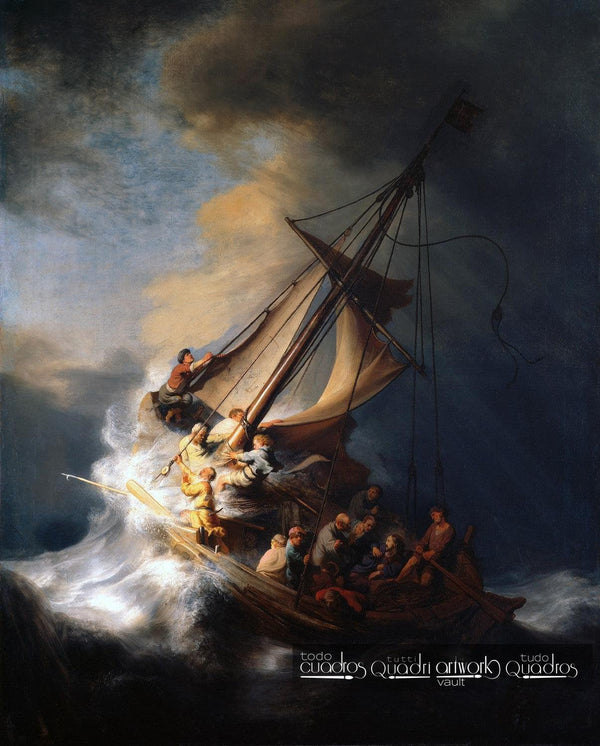
Esta es la principal pieza sustraída en el robo de cuadros más célebre de la historia (ver en Wikipedia), que tubo lugar en el Museo Isabella Stewart Gardner, Bostón. Sólo se conserva una fotografía de buena resolución tomada hacia finales de la década de los 80.
This is the only seascape known by Rembrandt, which makes it rare and especially valuable, painted 1633It depicts a biblical scene from the New Testament, where the Sea of Galilee becomes stormy as the 12 apostles and Christ sail in a small boat with oars and sails. The figure of the Messiah, illuminated and at peace amid the desperate disciples, the movement of the waters, the boat, and the use of chiaroscuro on the canvas are the painting's most outstanding artistic elements.
Actualmente no se conoce el paradero del lienzo, los expertos sostienen que se encuentra actualmente en manos de mafias, y que lo utilizan como moneda de cambio y aval de pagos entre organizaciones criminales.
-
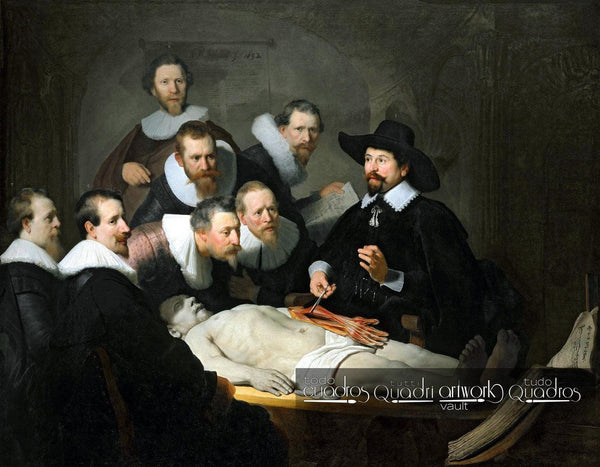
Cuadro al óleo sobre lienzo pintado por Rembrandt en 1632. Retrato grupal estilo barroco, donde 7 alumnos del célebre doctor holandés Nicolaes Tulp, están atendiendo a sus enseñanzas de anatomía.
Actualmente pertenece a la Galería Real de Pinturas Mauritshuis, Holanda.
-
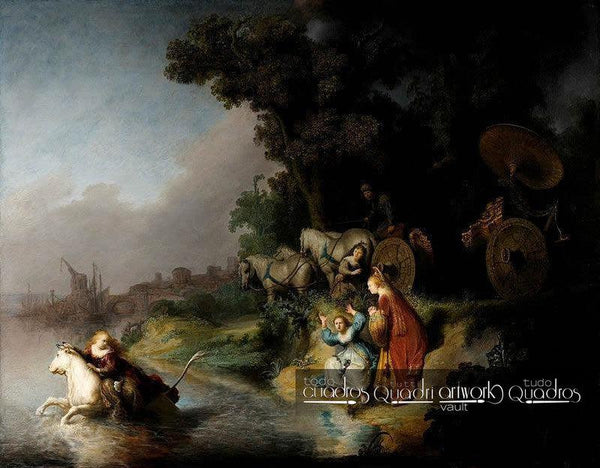
Paisaje ficticio con personajes mitológicos, pintado por Rembrandt en 1632.
Alegoría a la usanza del barroco, con elementos de claroscuro, donde se aprecia al personaje griego "Europa", siendo raptada por Zeus sobre un toro blanco. Mientras cruzan el río sus amigas espantadas y sin posibilidad de hacer otra cosa, se quedan en la orilla.
Actualmente en el Museo J. Paul Getty, California.
-
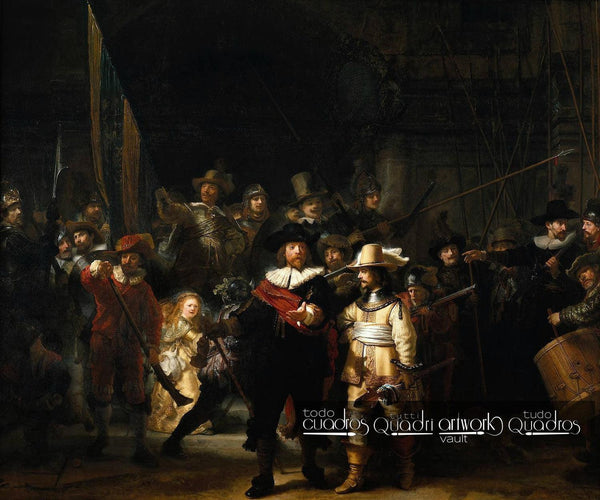
Este es el cuadro más famoso de Rembrandt, pintado en 1642, considerado como una de las obras cumbres del siglo de oro holandés. Es la obra más compleja del autor, el cuadro en sí mismo incluye todo tipo de detalles en el paisaje y los personajes, cada rostro, mirada y objeto está medido al milímetro por el creador.
Es un retrato militar múltiple, realizado por encargo, como el pintor solía hacer en estos casos, cobraba a cada una de las personas que pintaría en el lienzo.
Actualmente se encuentra en el Rijksmuseum, Ámsterdam.
-
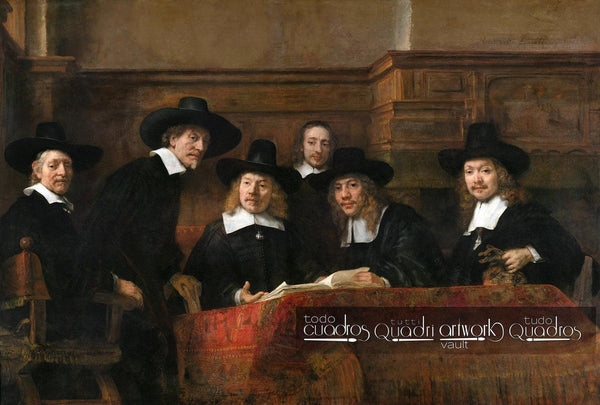
Óleo sobre tela del holandés Rembrandt, pintado en 1662.
Se conoce como el último gran retrato colectivo encargado al artista, en este caso se trata de 6 integrantes de una cofradía, con sus trajes holandeses autóctonos, alrededor de una mesa roja, están en lo que parece ser una lonja de telas.
Se encuentra en el Rijksmuseum de Ámsterdam.
-
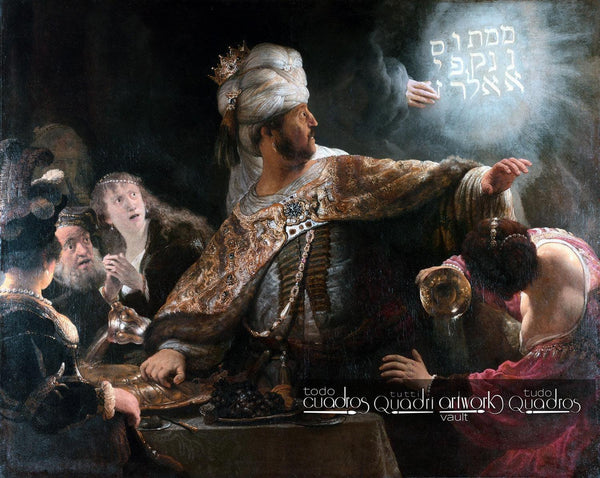
Escena del libro del profeta Daniel (Antiguo Testamento), donde se aprecia como Dios anuncia al rey de Babilonia, la destrucción de su reino. Pintado por Rembrandt en 1635. Actualmente se encuentra en la National Gallery, Londres.
-
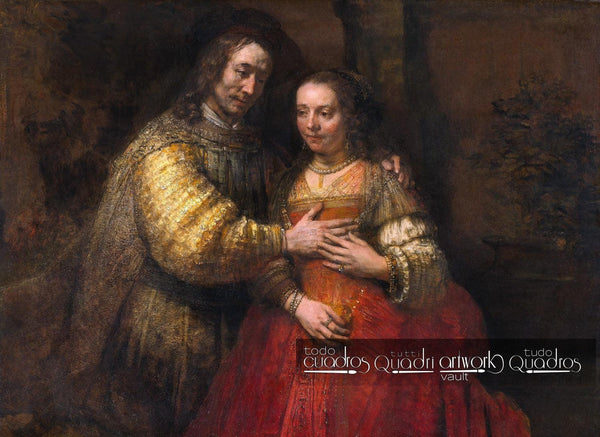
En neerlandés: Het Joodse bruidje, es una obra al óleo del período barroco pintada por Rembrandt en 1669.
A pesar del título, el cual fue inventado con posterioridad a la muerte del pintor, hoy en día aun los expertos no se ponen de acuerdo en quienes son los personajes, ni cual es la intencionalidad y significado de la pintura, ya que carece de elementos contextuales que permitan un análisis más completo.
Actualmente pertenece a la colección del Museo Nacional de Ámsterdam (Rijksmuseum).
Pídalo en la sección de Rembrandt oil paintings
Related famous painters: relacionados:
↑Back to top

